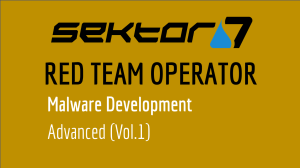
Real threat actors utilize various Tactics, Techniques and Procedures (aka TTPs). One of the tactic is Persistence – a way to survive a breached machine restart and preserve access to a target environment. There is a lot of focus on what methods adversaries use to exploit a particular vulnerability or how their C2 channels and infrastructure look like. Less often you find discussions about persistence. This course is aiming to change that. You will learn almost 30 different persistence techniques working on Windows 10. Most of them were used by nation-state threat actors, like EquationGroup, Turla, APT29, ProjectSauron or malware, including Flame or Stuxnet. As usual you will get not only full explanation of each technique with examples, but also a working code templates (written in C) and a complete development environment you can experiment with.
Syllabus
Intro and Setup
Low Privilege Persistence
Admin Level Persistence
Assignments








